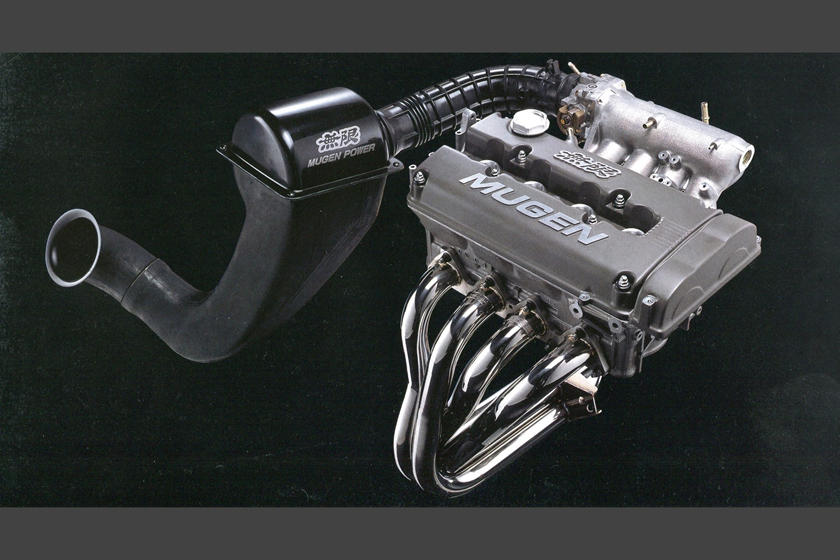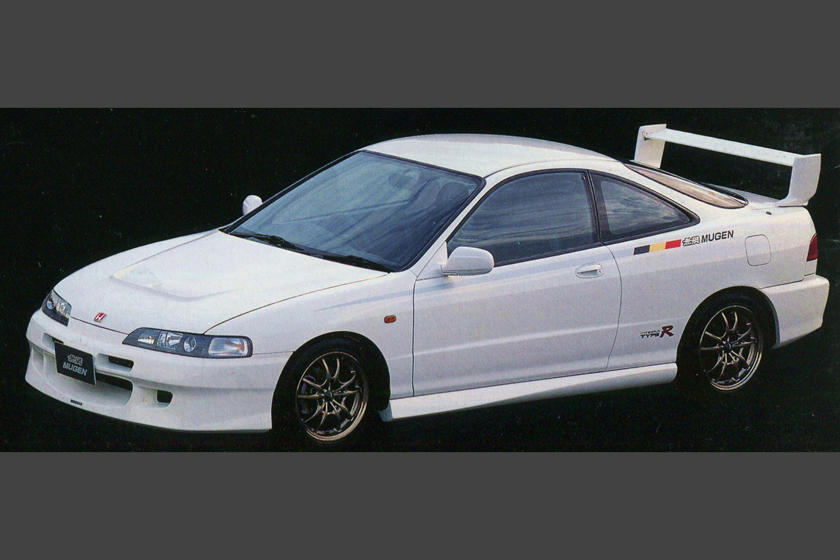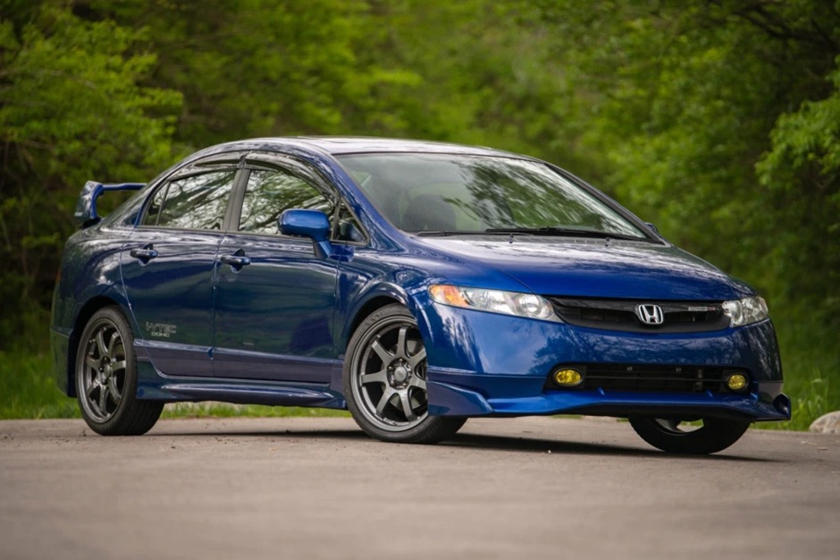Honda Nsx Mugen Rr Concept
Soichiro Honda's son took Honda to the next level in performance.
Mugen is a Japanese tuning and parts manufacturer founded by Soichiro Honda's son, Hirotoshi. It was founded in 1973, but the company has never been owned by Honda. Instead, it operates independently, tuning and racing Honda vehicles as well as selling aftermarket parts and, occasionally complete vehicles. Over the years, Mugen has also created concept cars for Honda.
Like his father, Hirotoshi Honda started out with motorcycles, focusing on motocross bikes. He founded Mugen with the help of veteran race car driver Masao Kimura and aimed for the company to eventually build its own cars. That journey started with bodykits, and over the years Mugen has expanded its motor racing interests from Formula 3000 to Formula 1, as well as sports car and motorcycle racing. But today, we're going to concentrate on the company's road cars and concepts.
 Mugen
Mugen
Mugen Integra Type R (DC2R)
Honda's DC2 generation Integra Type R was already a formidable street and track weapon before Mugen got its engineering hands on the car. It launched in 1995 and was homologated for FIA Group N and GT World Cup racing, making it a race car with a license plate. Journalists lauded it for its grip and handling as well as its 1.8-liter DOHC VTEC four-cylinder engine making 195 hp and 130 lb-ft. At the time it was producing the most power per liter of any naturally aspirated engine on the market, and it revved out to 8,500 rpm. It also had a close-ratio five-speed manual, a Helical limited-slip diff, sport-tuned suspension and brakes, and weighed in at just 2,639 lbs.
The Integra Type R didn't need improving, but Mugen put itself on the map with a functional aero body kit, suspension upgrades, and a new intake and exhaust manifold to help the free-revving engine breathe easier. The aero kit was a clever piece of work, particularly the front bumper cover that improved downforce while pulling hot air out of the engine compartment.
 Mugen
Mugen
 Mugen
Mugen


2008 Civic Mugen Si
The American Civic Mugen Si was a bit of a disappointment, although its ultra-rare status as the first Mugen production car that came to the US makes it worthy of mention. If you just wanted to have that Mugen badge and style, it was a great car. It was all body kit and aesthetic accouterments, including a massive big-bore exhaust tip, GP 18-inch forged aluminum wheels, and an A380-sized rear wing. The only addition inside was a Mugen-branded shift knob. It feels like a massive missed opportunity to not have put Mugen's skills to work on the 197-hp, 2.0-liter four-cylinder engine.
 Bring A Trailer
Bring A Trailer
 Bring A Trailer
Bring A Trailer
 Bring A Trailer
Bring A Trailer
 Bring A Trailer
Bring A Trailer
2008 Honda Civic Mugen RR
As if to mock American tuners in the early 2000s, this is the car everyone wanted, but only 300 were made for the Japanese Domestic Market (JDM). We understand the claims that the Civic Mugen RR (Commonly referred to as the Double R) was the greatest JDM car yet. Mugen threw everything in the parts catalog at the Double R. The engine benefited from camshafts, valve springs, a ram air intake, a large capacity intake box, a new exhaust manifold, a high-flow catalytic converter, a dual-exhaust system, and a carbon intake manifold cover.
The chassis was upgraded with five-way adjustable suspension, a better braking system with slotted rotors, 18-inch Mugen aluminum wheels, aluminum hood, carbon front bumper, grille, and the list just goes on and on from there. It brings a tear to your eye that so few were made, and its performance was well proven by beating the Type R it was built upon around the Tsukuba Circuit by two whole seconds, a lifetime on the racetrack.
Mugen S2000
The Mugen S2000 wasn't a production car, but a rolling advertisement for the tuner's S2000 parts catalog via King Motorsports. That means there's no reworked engine, however, with the carbon-fiber airbox puling air from in front of the radiator, a Mugen exhaust system, a low-temp thermostat, a high-pressure radiator cap and a Mugen ECU installed, it adds 14 horsepower. Car and Driver clocked the show car hitting 60 mph in 5.4 seconds, which is 0.4 seconds quicker than stock. It also has Mugen springs and shocks, a stiffer front anti-roll bar, and a King-designed bump-steer kit. With all the parts it would have cost three times more than the MSRP for a factory Honda S2000. Still, the gold Mugen wheels are absolutely gorgeous.
Mugen Fit Dynamite
One of the most entertaining sounding concepts Mugen put together for Honda debuted at the Tokyo Auto Salon in 2004. The body kit and orange paint are attention-grabbing, but the headline is the 150-hp K20A engine swapped in from a Honda Civic. Except 150 hp wasn't silly enough for a Mugen Fit, so the company supercharged it, taking output up to 260 hp. A few years later, Mugen supercharged the standard Fit engine and used the same body kit to create the Mugen Fit Spec D concept.
Honda Civic Type R (RC20GT Package)
Speaking of crazy concept cars, Mugen's take on the current generation Honda Civic is way out there. The new extreme body kit is isn't just a wilder shell of an already wild vehicle. It improves the car's aerodynamics and cooling efficiency. Mugen calls it the RC20GT Package. Along with the Mugen Carbon Aero bodywork, the package features a new exhaust system, Brembo brakes, an upgraded suspension, MDCF aluminum wheels, Mugen sports bucket seats and steering wheel, and new LED taillights. Along with efficiency additions to the engine, the package also includes a one-way limited-slip differential.
Honda NSX Mugen RR
If there's a concept car we wish had made it into production, it's this one. With inspiration from the Super GT race car (with a spoiler-mounted brake light) the NSX RR is wider and lower with a mix of carbon fiber and metal body panels. The center intake has air guides to direct the air to the front-mounted radiator and the two-piece slotted floating disc brakes, while hot air from the radiator is disposed of through the louvered outlets on the hood.
A roof scoop has been built into the rear windscreen to help feed cool air to the mid-mounted engine, and there lies the biggest modification. The 3.2-liter V6 is mounted longitudinally rather than horizontally as the gods of racing intended. However, the gods of racing were ultimately disappointed as the NSX RR wasn't fitted with a transmission (okay, maybe that was the biggest modification). That would have been way too expensive to engineer for a one-off vehicle.
 Mugen
Mugen
Source: https://carbuzz.com/features/greatest-mugen-tuned-cars-ever-made







Tidak ada komentar:
Posting Komentar